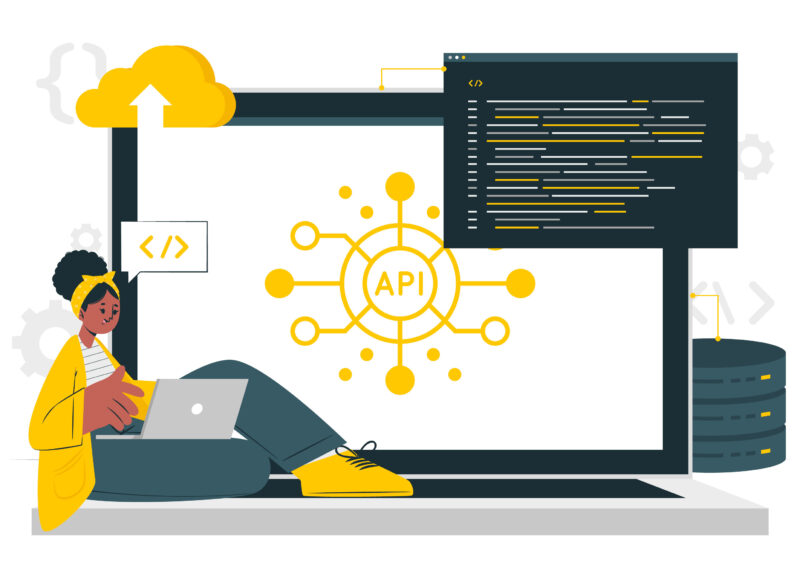Java is a versatile, object-oriented programming language widely used for building applications across different platforms, from web to mobile to enterprise-level systems. Known for its “write once, run anywhere” capability, Java enables code written on one platform to be run on any device that supports Java without requiring modifications. It operates through the Java Virtual Machine (JVM), which allows it to be platform-independent, making it highly adaptable and scalable. Java’s structure includes classes, objects, inheritance, and polymorphism, making it both powerful and flexible for large-scale application development. Its extensive libraries and frameworks, like Spring and Hibernate, simplify complex coding tasks, and its robust community support makes it a popular choice for developers worldwide.
Java’s syntax is similar to C++ but simplified to eliminate common errors associated with lower-level programming. Its design emphasizes simplicity, security, and portability, which makes it ideal for distributed systems like networked applications. Java’s garbage collection mechanism manages memory efficiently, freeing up unused resources and enhancing application performance. This feature allows developers to focus more on application logic rather than memory management, a crucial factor in applications that require high performance and reliability.
Java is particularly strong in enterprise environments, where its stability and scalability are essential. Technologies like Java Enterprise Edition (Java EE) provide APIs for developing large-scale, multi-tiered, scalable, and secure applications. Java is also the foundational language for Android development, making it central to mobile app development. With frameworks like Spring and Hibernate, Java has extended its reach to web development, where its stability and secure frameworks make it ideal for backend services. The language continues to evolve, with regular updates adding new features, which keeps Java relevant and adaptable in an ever-changing technology landscape.
Topics of Course
-
1.1 – Introduction to Java programming
-
1.2 – What is Java?
-
1.3 – History and Evolution of Java
-
1.4 – Java Features and Advantages
-
1.5 – Java Platforms and Editions
-
1.6 – Java Development Kit (JDK)
-
1.7 – Integrated Development Environments (IDEs)
-
1.8 – Java Syntax and Basic Structure
-
1.9 – Data Types and Variables in Java
-
1.10 – Operators and Expressions in Java
-
2.1 – Java Data Types and Variables
-
2.2 – Introduction to Java Data Types
-
2.3 – Primitive Data Types in Java
-
2.4 – Integer Data Types
-
2.5 – Floating-Point Data Types
-
2.6 – Boolean Data Type
-
2.7 – Character Data Type
-
2.8 – Variable Declaration and Initialization
-
2.9 – Variable Naming Conventions
-
2.10 – Scope and Lifetime of Variables
-
3.1 – Control Flow Statements in Java
-
3.2 – Conditional Statements
-
3.3 – If-Else Statements
-
3.4 – Nested If-Else Statements
-
3.5 – Switch Statements
-
3.6 – Ternary Operator
-
3.7 – Looping Statements
-
3.8 – For Loop
-
3.9 – While Loop
-
3.10 – Do-While Loop
-
4.1 – Functions and Methods: Java Programming
-
4.2 – Defining Functions and Methods
-
4.3 – Function Parameters and Arguments
-
4.4 – Return Values
-
4.5 – Scope of Variables
-
4.6 – Function Overloading
-
4.7 – Recursion
-
4.8 – Anonymous Functions
-
4.9 – Lambda Expressions
-
4.10 – Functional Programming Concepts
-
5.1 – Object-Oriented Programming (OOP) Concepts
-
5.2 – Recap of Previous Days
-
5.3 – Inheritance in Java
-
5.4 – Polymorphism in Java
-
5.5 – Abstraction in Java
-
5.6 – Interfaces in Java
-
5.7 – Abstract Classes in Java
-
5.8 – Encapsulation in Java
-
5.9 – Access Modifiers in Java
-
5.10 – Real-World Examples of OOP Concepts
-
6.1 – Java Collections Framework
-
6.2 – Overview of Collections in Java
-
6.3 – Collection Interfaces
-
6.4 – List Interface
-
6.5 – Set Interface
-
6.6 – Map Interface
-
6.7 – Queue and Deque Interfaces
-
6.8 – Commonly Used Collection Classes
-
6.9 – Sorting and Searching Collections
-
6.10 – Iterating over Collections
-
7.1 – Exception Handling in Java
-
7.2 – What are Exceptions?
-
7.3 – Types of Exceptions in Java
-
7.4 – Handling Exceptions using Try-Catch Blocks
-
7.5 – Catching Multiple Exceptions
-
7.6 – Nested Try-Catch Blocks
-
7.7 – Throwing Exceptions
-
7.8 – Custom Exception Classes
-
7.9 – Best Practices for Exception Handling
-
7.10 – Logging and Exception Handling
-
8.1 – Basic File I/O in Java
-
8.2 – Introduction to File I/O
-
8.3 – File and FileInputStream/FileOutputStream
-
8.4 – Reading and Writing Files
-
8.5 – BufferedReader and BufferedWriter
-
8.6 – File Paths and Directories
-
8.7 – File Permissions and Attributes
-
8.8 – Handling File I/O Exceptions
-
8.9 – Best Practices for File I/O
-
8.10 – Conclusion and Key Takeaways
-
9.1 – Introduction to Java APIs and Libraries
-
9.2 – What are Java APIs?
-
9.3 – Commonly used Java APIs
-
9.4 – Benefits of using Java APIs
-
9.5 – Accessing Java APIs
-
9.6 – Importing Java API classes
-
9.7 – Utilizing Java API methods
-
9.8 – Customizing Java API functionality
-
9.9 – Best practices for using Java APIs
-
9.10 – Resources for learning more about Java APIs
-
10.1 – Developing a Simple Java Application
-
10.2 – Planning Your Application
-
10.3 – Creating the Java Code
-
10.4 – Compiling and Running the Application
-
10.5 – Testing and Debugging
-
10.6 – Example: A Simple Calculator
-
10.7 – Expanding Your Application
-
10.8 – Best Practices for Java Development
-
10.9 – Resources for Learning Java
-
10.10 – Building a Solid Foundation




